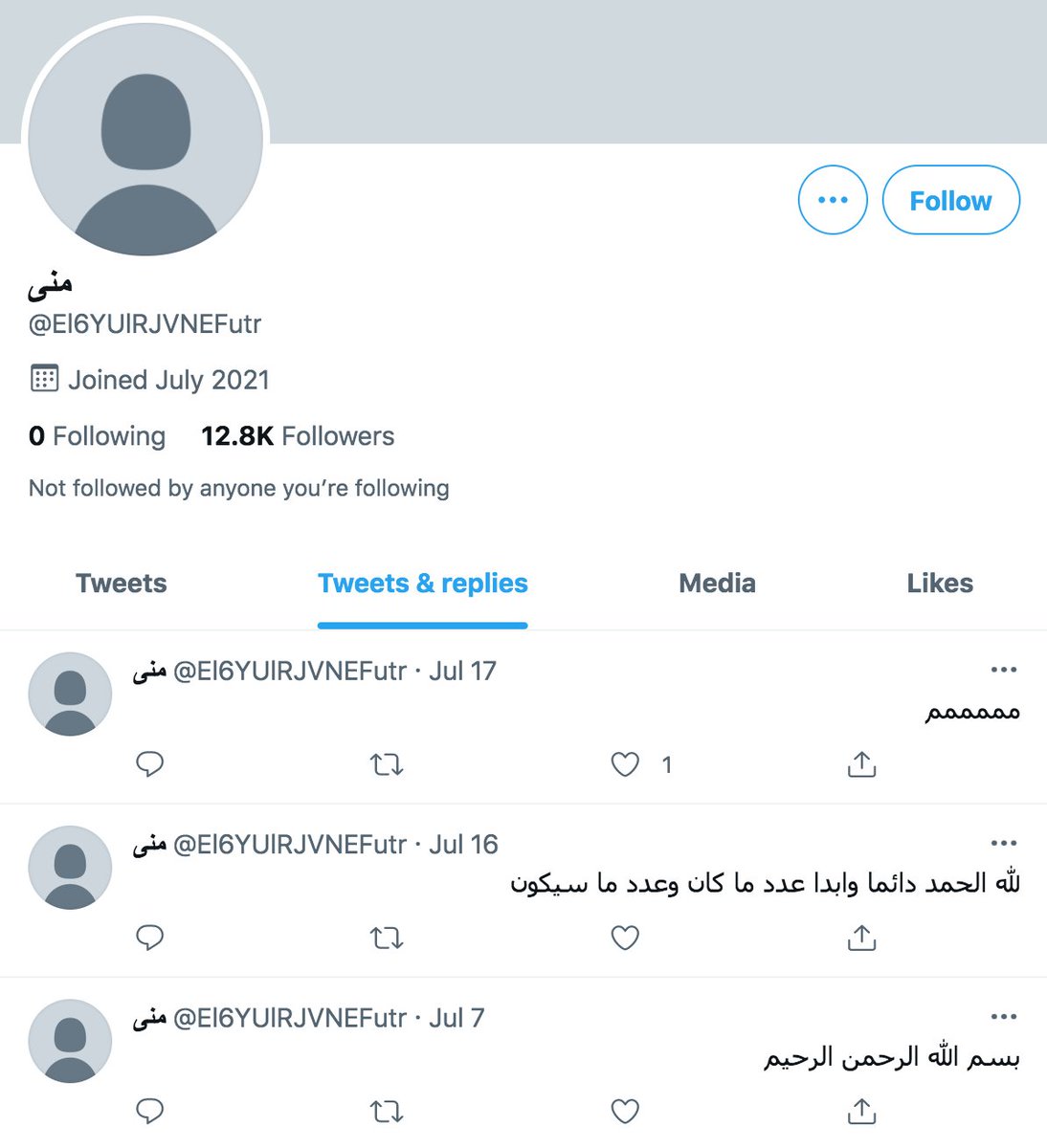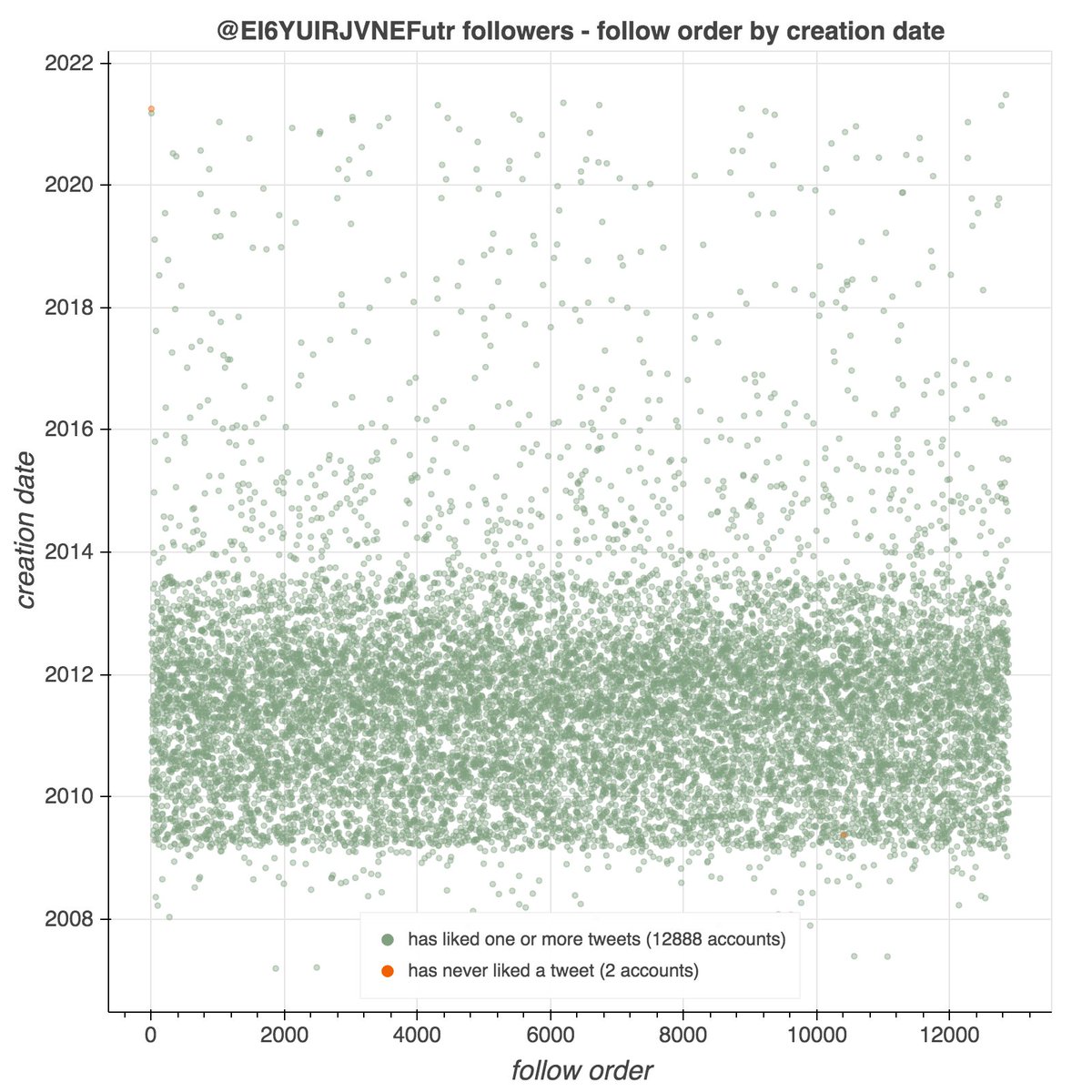Meet @El6YUlRJVNEFutr (permanent ID 1412134274762002436). Despite having been created just two weeks ago and having almost no content, it has somehow accumulated a large following consisting almost entirely of accounts that are at least seven years old.
cc: @ZellaQuixote
cc: @ZellaQuixote

Weirdly, almost all of @El6YUlRJVNEFutr's followers are older accounts, created in 2013 or earlier. The near-total absence of accounts that are even remotely new is a sign that this follower growth is extremely unlikely to be organic. 

These accounts are part of a bulk follow network that followed a variety of accounts en masse over the last few weeks. (The followers from the network are highlighted in orange on the follow order by date range plots.)
Here are the accounts most frequently followed by the accounts in the network. Almost all of the accounts followed by the network are Arabic-language accounts. Most (other than @El6YUlRJVNEFutr) are established accounts with at least some content. 

The accounts in this network all follow hundreds of accounts but have few or no followers of their own. Almost have Arabic display names and "KSA" as their profile location. Most of the accounts between 2014 and 2021, when they suddenly woke up and kicked into high gear. 



For many of these accounts, their recent reawakening was accompanied by a makeover. At least 9107 had their display names changed sometime between March 2020 (when we captured data on a bunch of older Twitter accounts) and July 2021 - in all cases, to Arabic text. 

Almost all of this network's content since it woke back up (1996877 of 1997387 tweets, 99.97%) is retweets, mostly of the same content. The network primarily amplifies large Arabic-language accounts, although two of the top three are exceptions: @justinsuntron and @BitTorrent. 



This network showed one previous spike of activity back in August 2012, when it posted thousands of tweets about "photos" accompanied by shortened links. The shortened links lead to pages hosted on narod(dot)ru that no longer exist. 

How did we find this network? It bestowed a few hundred retweets each on a series of recent @ARTEM_KLYUSHIN tweets about a tanker fire in Dubai, all of which received substantially more retweets than likes as a result. This is a sign of potential astroturfing, so we dug deeper. 

• • •
Missing some Tweet in this thread? You can try to
force a refresh































